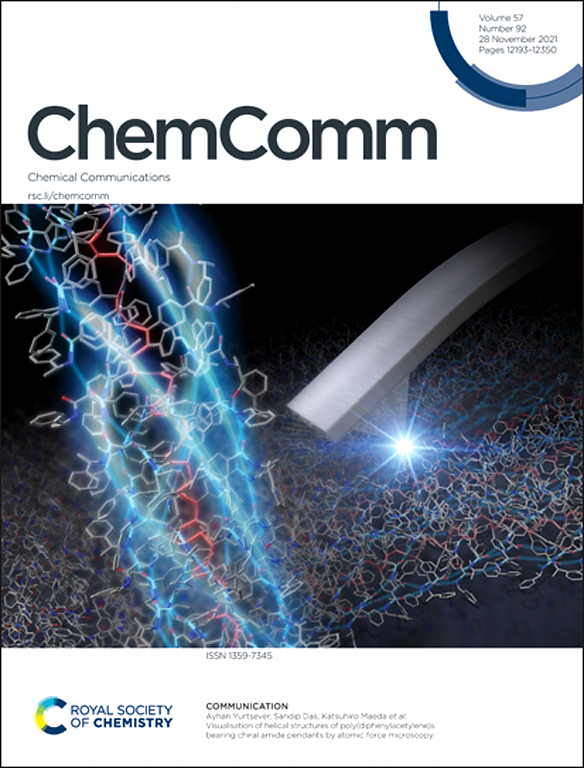Metal–organic frameworks as advanced platforms for radionuclide detection†
IF 4.2
2区 化学
Q2 CHEMISTRY, MULTIDISCIPLINARY
引用次数: 0
Abstract
The development of nuclear energy has significantly increased the prevalence of artificial radionuclides, mainly generated through nuclear fission processes, alongside naturally occurring radionuclides. These radionuclides, encompassing a wide array of elements, including 3H, 85Kr, 90Sr, 99Tc, 129/131I, 137Cs, 222Rn, 232Th, and 235/238U, exist in diverse chemical forms such as gases, ions, and molecular species, posing substantial risks to human health and environmental safety. Consequently, the precise detection and selective separation of these radionuclides are of paramount importance for the timely identification and mitigation of associated hazards. This review explores the application of metal–organic frameworks (MOFs) as advanced platforms for radionuclide detection, utilizing their structural tunability and versatile functionality. The discussion is systematically organized based on the chemical forms of radionuclides, categorizing them into gaseous, cationic, and anionic species. Key detection mechanisms employed by MOFs, including fluorescence sensing (via quenching, enhancement, and fluorochromism), scintillation techniques, colorimetric sensing, electrochemical sensing, and so on, are thoroughly examined. These approaches are analysed to elucidate their principles, practical implementations, and limitations.

金属有机框架作为放射性核素探测的先进平台。
核能的发展大大增加了主要通过核裂变过程产生的人工放射性核素和自然存在的放射性核素的使用。这些放射性核素包括一系列广泛的元素,包括3H、85Kr、90Sr、99Tc、129/131I、137Cs、222Rn、232Th和235/238U,它们以各种化学形式存在,如气体、离子和分子物种,对人类健康和环境安全构成重大风险。因此,这些放射性核素的精确探测和选择性分离对于及时查明和减轻相关危害至关重要。本文综述了金属有机框架(mof)作为放射性核素检测的先进平台的应用,利用其结构的可调性和多功能。讨论是根据放射性核素的化学形式系统地组织起来的,将它们分为气态、阳离子和阴离子。mof采用的关键检测机制,包括荧光传感(通过猝灭、增强和荧光变色)、闪烁技术、比色传感、电化学传感等,都进行了全面的研究。对这些方法进行了分析,阐明了它们的原理、实际实现和局限性。
本文章由计算机程序翻译,如有差异,请以英文原文为准。
求助全文
约1分钟内获得全文
求助全文
来源期刊

Chemical Communications
化学-化学综合
CiteScore
8.60
自引率
4.10%
发文量
2705
审稿时长
1.4 months
期刊介绍:
ChemComm (Chemical Communications) is renowned as the fastest publisher of articles providing information on new avenues of research, drawn from all the world''s major areas of chemical research.
 求助内容:
求助内容: 应助结果提醒方式:
应助结果提醒方式:


